First, the identity of the host species was uncertain. It appeared to be closely related to Leptothorax muscorum, which some specialists consider to be a species group (Francoeur pers.comm. 2003). Buschinger and Heinze (1993) refer to this species as Leptothorax C. An examination of specimens of this species by Andre Francoeur in June of 2003 led to the suggestion that this may be Leptothorax septentrionalis, although this species designation must be revived taxonomically (Bolton 1995).
Second, reared colonies revealed that D. pocahontas queens could produce workers (Buschinger and Heinz 1993). Further, many of these workers displayed morphological characteristics similar to the purported host species. Thus, the relationship between D. pocahontas and its host species (possibly) Leptothorax septentrionalis became ambiguous. Buschinger and Heinz (1993) note a number of possible explanations for these observations but the relationship remains unresolved.
In July of 2002 and 2003, Dr. Staffan Lindgren with the University of Northern British Columbia, collected specimens from the type locality for D. pocahontas near Jasper for Dr. Riitta Savolainen at the University of Helsinki, Finland. Dr. Savolainen, a specialist in molecular systematics and evolution, will attempt to determine the nature of the relationship between Doronomyrmex pocahontas and Leptothorax septentrionalis.
The following photographs, taken by R. Higgins (website author), compare specimens confirmed as D. pocahontas and possibly Leptothorax septentrionalis by Dr. A. Francoeur (Centre de données sur la biodiversité du Québec, Universite du Quebec a Chicoutimi). These were identified from specimens taken to the Centre de données sur la biodiversité du Québec by R. Higgins in June of 2003.
Lateral views of Doronomyrmex pocahontas below
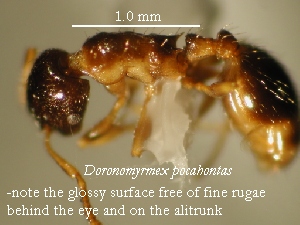

Lateral views of Leptothorax septentrionalis below
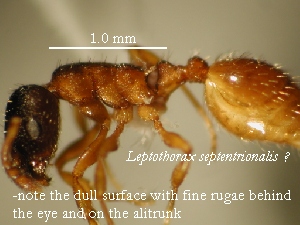
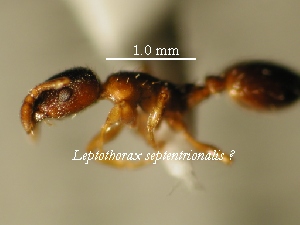
Head of Doronomyrmex pocahontas below
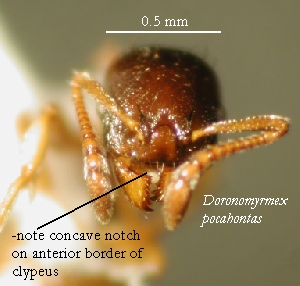
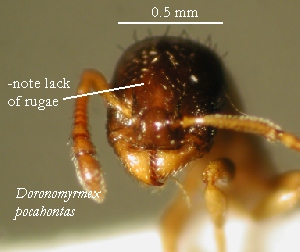
Head of Leptothorax septentrionalis below

Lateral view of petiole/post-petiole of Doronomyrmex pocahontas below
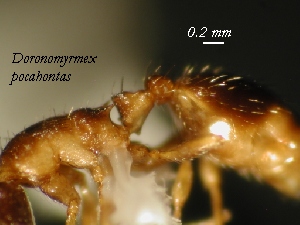
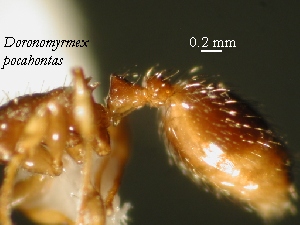
Lateral view of petiole/post-petiole of Leptothorax septentrionalis below
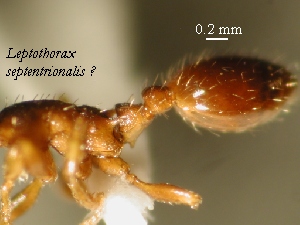

Dorsal view of post-petiole of Doronomyrmex pocahontas below
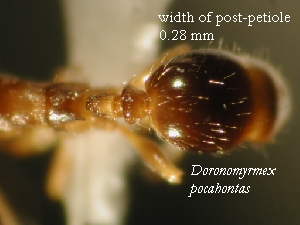
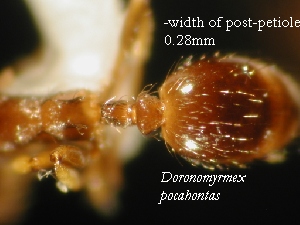
Dorsal view of post-petiole of Leptothorax septentrionalis below
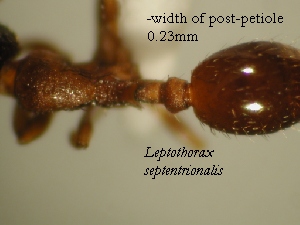
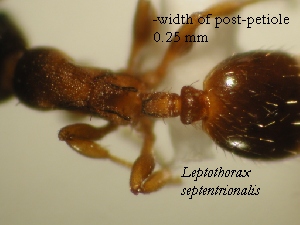
View of ventral petiolar and post-petiolar teeth from two different specimens of Doronomyrmex pocahontas. Ventral petiolar tooth seems less pronounced in D. pocahontas as compared to L. septentrionalis. However, the small sharp ventral tooth on the post-petiole appear similiar.
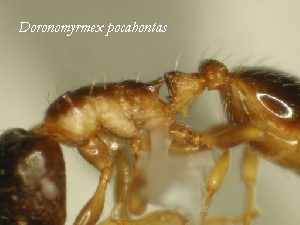
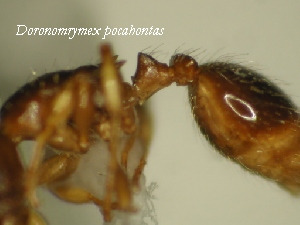
View of ventral petiolar and post-petiolar teeth from two different specimens of Leptothorax septentrionalis.
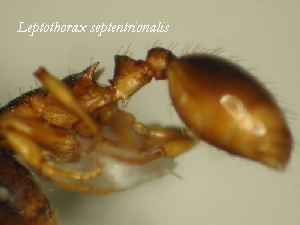
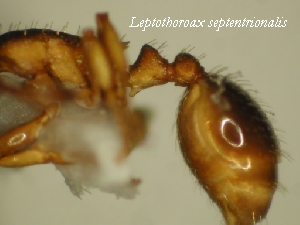
All images by R. Higgins unless otherwise noted
Bolton B. 1995. A New General Catalogue of the Ants of the World. Harvard University Press. 504p.
Buschinger A. 1979. Doronomrymex pocahontas n. sp., a parasitic ant from Alberta, Canada (Hym. Formicidae). Ins. Soc. 26:216-222.
Buschinger A, Heinze J. 1993. Doronomrymex pocahontas: not a workless parasite but still and enigmatic taxon ( Hymenoptera, Formicidae). Ins Soc. 40:423-432.
Francouer A. 2003. Professeur émérite. Centre de données sur la biodiversité du Québec. Universite du Quebec a Chicoutimi. Pers.comm. relating to specimens taken to Quebec by the author of this webpage, R. Higgins